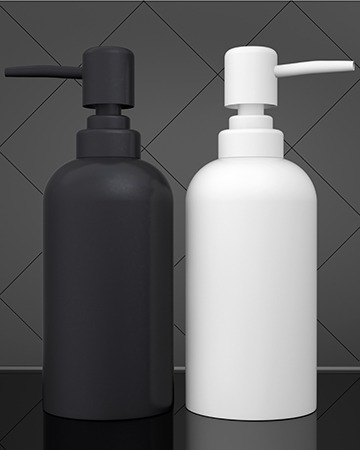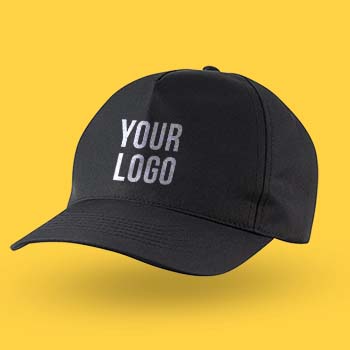September 12th, 2021
As the Amazon marketplace grows, it is offering sellers more and more creative ways to build their business and market a wide variety of products. One of these initiatives is the option to sell private-label products on Amazon.

This category on Amazon is attractive as a business strategy. Many online sellers are diving into the world of Amazon private label. The general concept is fairly straightforward – a seller simply purchases generic products that are already selling well, and then they remarket them under their own packaging and logo.
Think you’re ready to get into the private-label business? Read on for more information!
What Are Private Label Products?

Simply put, private label products are products made or manufactured by one company, which are then branded, marketed and sold by another company under their own brand label.
Some of the biggest markets in the private label game are everyday household items such as toilet paper and cleaning supplies, or electronics that you use on a daily basis such as phone chargers or printer cartridges for your printer.
A seller can boost sales and reap immense benefits from creating and selling their own private label products. One of the most profitable and sustainable ways to do this is to sell your private label products through Amazon FBA.
Why You Should Consider Selling Private Label Products

Selling private label products on Amazon is a popular way to start and grow your eCommerce business if you don’t have your own manufactured products to sell. In order to sell private label on Amazon, you will want to do your research to find a product that’s in demand, thus making it easier to sell and gain higher profits.
In addition to increased revenue, private labelling your products can lead to significantly increased exposure, especially if you are supplying frequently needed products such as household or office supplies.
As discussed above, choosing a dropship option such as FBA is a great way to maximize profits while reducing risk – plus, with FBA, Amazon handles all of your customer service!
Are you ready to start selling your own private label products? Here are a few more things that you should know about going the private label route.
Do Your Research and Know Your Market
When it comes to choosing a product to private label, the choices may seem endless. However, it is important to get the information that you need to support your decision. Sellers who do a round of preliminary research can avoid some of the most common pitfalls. This includes investing in a private label product based on your personal opinions rather than data to back up the choice - follow the data.
There are plenty of private label products available that sell extremely well. To help narrow down your search, look for those best sellers and keep a list that you can go back and reference. After you narrow down your list double check to make sure they are available to sell as a private label product.
Sellers can choose just about any product they want, and strategic research can help ensure that the items chosen are ones that are popular among shoppers and destined to become hot sellers.
When it comes to choosing a product to private label, we recommend keeping the following factors in mind:
- Is the product lightweight and easy to ship?To maximize your profit margin, try to choose items that are small and that weigh no more than two pounds. Choosing a product that falls into this category will help you save on shipping as well as Amazon fulfilment costs and even storage fees.
- Is the product a seasonal item or an evergreen item?
When choosing a product to private label, try to avoid seasonal products at all costs since they will most likely be stuck in inventory for several months out of the year. These items include things such as Christmas lights, Easter goodies, Valentine’s Day gifts, Halloween décor, and seasonal clothing such as ski pants. While you certainly can sell seasonal products via private label, we recommend establishing a core base of private label products that can sell consistently all year long first before you go the seasonal route. - Is the product uncomplicated and easy to sell?
Certain products such as those that require batteries or other accessories can be difficult to sell, and may cause additional customer service issues. It is smart to avoid any product that requires a certification, legal compliance, or extensive paperwork. Also, avoid products that are likely to malfunction or break such as electronics. This also applies to clothing and apparel, as you need to stock a wide variety of different sizes and colors and may run into frequent returns or exchanges due to sizing or fit issues.
Choose the Right Manufacturer (and Sample the Merchandise!)
For an Amazon seller to get started selling private label products, finding a trusted manufacturer to work with is vital. It’s important to look for manufacturers that offer high-quality products. It is also important to be on the lookout for manufacturers that may require their own brand to be on the product with the seller’s brand. While dealing directly with a manufacturer may sound intimidating, the fact is that it is the most direct route to getting your hands on the right private label product.
 When dealing directly with manufacturers, we recommend reaching out to three to five potential suppliers in order to gain valuable insight. This will allow you to compare products and offers, better evaluate your options and will give you the opportunity to negotiate between suppliers. From there, you can make an educated decision and choose the manufacturer that best suits your needs.
When dealing directly with manufacturers, we recommend reaching out to three to five potential suppliers in order to gain valuable insight. This will allow you to compare products and offers, better evaluate your options and will give you the opportunity to negotiate between suppliers. From there, you can make an educated decision and choose the manufacturer that best suits your needs.
Before committing to a manufacturer, always request samples of the product that you intend to sell. This is an essential part of the process, and it is critical to sample the merchandise because the quality of the merchandise has the potential to make or break your reputation as a seller. Do not take this lightly. While usually samples are not free and it is a standard practice for suppliers to charge you, going through this step will save a lot of time and headaches down the road.
If you are satisfied with the quality of the samples, then it is time to move into the negotiation phase with the supplier. If you aren’t satisfied with the quality of the samples, then move on and find another supplier.
Create Product Listings That Sell
 To start selling on Amazon, you’ll need to create a well-crafted product listing for each product that will be sold. This is the page customers find after doing a search on Amazon. Fill out the product listing completely (title, all five bullet points, product description and pictures), ensuring keywords are used appropriately to help optimize the page for Amazon’s search engine. Be sure to include high-quality images that fit Amazon’s perimeters so it’s more likely a customer will want to purchase the product.
To start selling on Amazon, you’ll need to create a well-crafted product listing for each product that will be sold. This is the page customers find after doing a search on Amazon. Fill out the product listing completely (title, all five bullet points, product description and pictures), ensuring keywords are used appropriately to help optimize the page for Amazon’s search engine. Be sure to include high-quality images that fit Amazon’s perimeters so it’s more likely a customer will want to purchase the product.
Do you want more detailed information on how to pick products and strengthen your selling potential on Amazon? Check out this article, 8 Steps For Selling Private-Label Products on Amazon.
Marketing Private Label Products
Once the product listing is optimized and live on Amazon’s website, it’s time to start marketing. Marketing can be done within Amazon’s site utilizing their advertising platform or can be done externally through the use of social media and email marketing.
It’s also beneficial to learn about what Amazon uses to rank products for their search engine. This knowledge can make it possible to boost a product’s ranking, which can lead to more sales.
If you’d like to start selling on Amazon, private label products are an excellent option as you can start building your brand quickly and easily. Follow this advice to get started or contact Awesome Dynamic to get started with your free consult. We're a full service Amazon consulting agency and can help every step of the way.